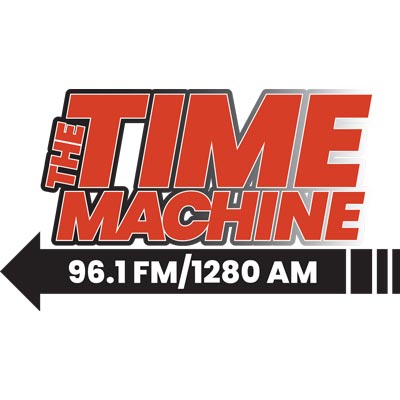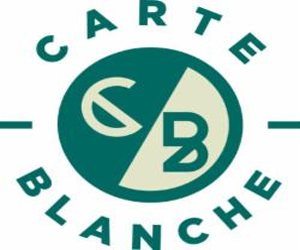California Gov. Gavin Newsom Wednesday unveiled his May budget revision, blaming the state’s $11.9 billion shortfall on a “Trump slump.”
The Democratic governor said $10 billion of the shortfall is from lower projections for capital gains tax revenue due to stock market declines.
In January, before the state’s major Southern California wildfires and President Donald Trump assumed office, the governor’s budget anticipated a $363 million budget “surplus.”
“We’re going to see an impact of about a $16 billion downturn, not all in the next fiscal year, but fiscal year plus one,” said Newsom, with “Trump Slump” highlighted in the live budget presentation.
California Republicans responded by highlighting Newsom’s transformation of a 2022 $98 billion surplus into sustained deficits.
“Over the past decade, Democratic budget writers have doubled state spending even as the state’s population remained flat,” said California Legislative Republicans in a caucus statement. “Worse, they took a short-term surplus of $98 billion in 2022 and then quickly overspent their way to years of deficits in the tens of billions of dollars annually.”
State Assemblyman Carl DeMaio, R-San Diego, who was recently stipped of his budget committee assignment soon after using a public hearing to extract the $9.5 billion cost of illegal immigrant health care from state officials, pointed out that the state government workforce has grown 20% since Newsom took office in 2019, while government salaries and benefits have skyrocketed.
“Salaries and benefits are up 42%, now averaging $177,000 per employee,” said DeMaio. “Newsom and California Democrats are desperately trying to blame Donald Trump for the years of their reckless and irresponsible spending decisions — and their job-killing policies that have resulted in significant lost revenues to our state.”
Newsom expects $10 billion less in capital gains tax revenue, $2.5 billion less in corporate tax revenue, $2 billion less in personal income tax and wage withholding revenue, and $1.5 billion less in personal income tax items.
It’s possible sustained domestic outmigration could be to blame for much of the state’s personal income tax losses, as domestic net outmigration from mid-2021 to mid-2022 alone resulted in net losses of $24 billion of personal income.
Since President Donald Trump’s inauguration, all three major stock market indexes are down slightly. The Dow Jones Industrial Average fell from 43,487.83 points on Jan. 20 to 42,067.81 on Tuesday, while the Nasdaq Composite fell from 19,630.20 points to 19,010.09, and the S&P 500 fell from 5,996.66 points to 5886.55.
Newsom presented a $322 billion budget, down from $323 billion in January.
The governor celebrated the May budget revision as only a 5.8% deficit as a percentage of the budget, compared to 22.6% in fiscal year 2024-2025 and 15.2% in fiscal year 2023-2024.
“By relative years, this is pretty mild,” continued Newsom. “We need to tighten things up into the out years as well.”
Newsom proposed freezing Medi-Cal enrollment for illegal immigrants starting in January 2026, and charging $100 per month for remaining illegal immigrants on the taxpayer-funded state healthcare system in January 2027, eliminating some clinic payments, capping In Home Supportive Services overtime and travel hours, and better managing prescription drug spending, which he said would save $5 billion.
California has spent $9.5 billion on illegal immigrant healthcare in fiscal year 2024-2025, while House Republicans have advanced a proposal to cut California’s federal healthcare reimbursements by $3.5 billion for allowing low-income illegal immigrants to be covered by Medi-Cal. It’s unclear if the governor’s proposed changes, which would have to be approved by the Legislature, would allow the state to escape the proposed federal cut.
California has lost nearly 200,000 private sector jobs since January 2023, only offset by major growth in taxpayer-funded jobs, particularly in the IHSS program, in which elderly or disabled Californians enrolled in Medi-Cal pay household members minimum wage to provide them with care.
IHHS now “employs” 742,300 Californians as “providers,” 98.3% of whom are related to the individual receiving care. “Providers” are employed for an average of 31 hours per week, which at minimum wage translates to taxpayer-funded wages of $505 per week, or $26,300 per year.
Medi-Cal prescription drug spending has doubled since 2018, with a quarter of the increase coming from weight loss drugs, and an unknown portion on drugs for illegal immigrants, as those drugs are not subject to federal reimbursements or rebates.
Newsom promised “there’s no new taxes,” but outlined $5.3 billion in new revenue, including through voter-passed Proposition 35. The measure is a $1.3 billion annual tax on managed-care organizations that are paid by Medi-Cal to manage billing and care for Medi-Cal patients.
The budget also proposes increasing spending per public school student from $24,314 to $25,176, which includes providing “transitional kindergarten,” a grade before kindergarten, for all California children with a staff ratio of one staff member per 10 children. The budget also includes before, after and summer school programs for each TK-6 student, and 2,484 “community schools,” with on-campus health care, “healthy food,” tutoring centers and “family services.”
The state is also funding screening for every kindergartener, first grader and second grader for “English as Second Language.”
Newsom also outlined his proposal for a new housing and homelessness agency, and a new bond for said agency to support “housing infrastructure.”
Newsom said CalTrans has cleared 16,000 homeless encampments from its property. He reiterated his model anti-camping ordinance for municipalities that allows cities to take advantage of last year’s Supreme Court decision allowing for camping bans on public property and rights of way such as sidewalks.
Last month, the U.S. Department of Justice announced it is investigating billions of dollars of California homeless spending for fraud and corruption. The department reiterated that a recent audit found the state was unable to account for much of the $24 billion it has spent in the last five years on homelessness.
Newsom ended his revised budget proposal by again speaking about the impact of illegal immigrant enrollment in Medi-Cal.
“We now have 1.6 million people just on the undoc side. That’s about 10.7% of the total, about 14.9 million people that receive Medi-Cal in the state, a significantly larger number than we anticipated,” said Newsom. “But again, so is with the caseload broadly, we are seeing caseload numbers that are significantly higher than projections in state after state, not just California.”
“We’re offering this approach, the Legislature will have their approach, but one thing we can’t is approach a balanced budget unless we address the costs of Medicaid or Medi-Cal in this state.”
State Senate budget chair Scott Wiener, D-San Francisco, has previously said that he supports continuing coverage for all immigrants in California, suggesting the Legislature may not adopt the governor’s proposal to freeze future enrollment for illegal immigrants.






